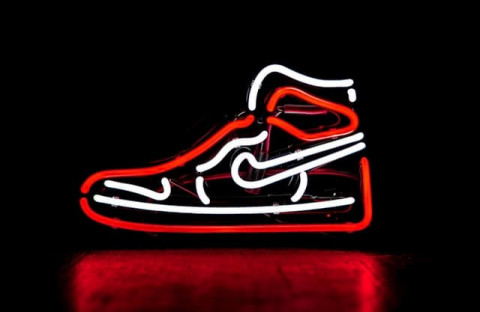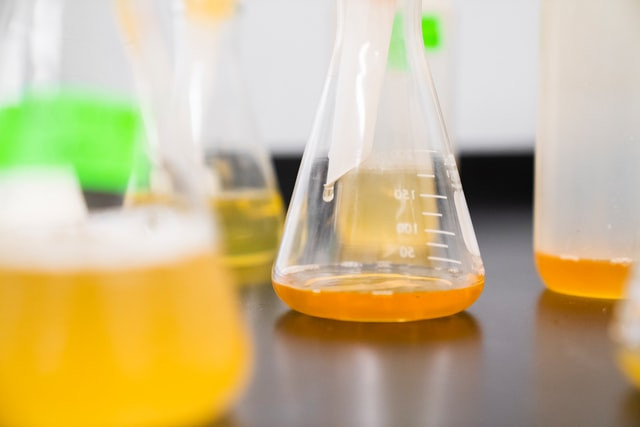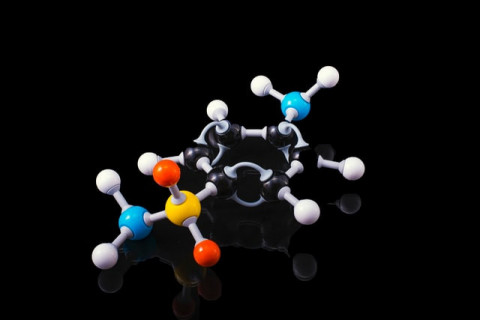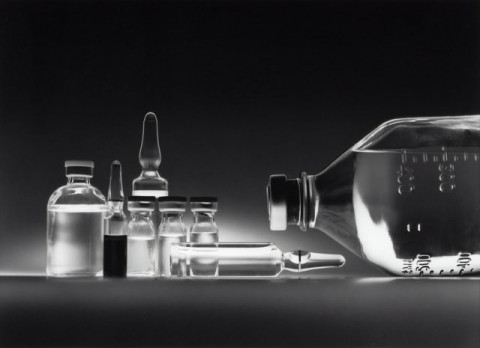
8 min
0
02.14.2023

Most students often hate chemistry. For many of them, their weekdays are almost monotonous: at home, at school, at work. But in fact, there are millions of chemical reactions going on around us every day. Today we want to draw your attention to such a concept as the molar mass of Cl since this element is indispensable in every person's life. We will also make the task easier for many students and show you how to solve a chemistry assignment in five steps.
Cl - What Is This Chemical Element?
Chemical formula: Cl2.
Empirical formula: Cl2.
Molecular formula: diatomic chlorine Cl2.
Molecular mass according to the periodic table: 35,453 amu.
Molar volume: 18,7 cm³/mol.
Atomic mass is always equal to the molar mass: 35,453 amu.
Number of atoms: chlorine is made up of just one atom - Cl.
Melting point −100,95 °C.
Evaporating temperature -34,55 °C.
In 1774, Karl Scheele, a chemist from Sweden, first obtained chlorine, but researchers believed it was not a separate element but a hydrochloric acid. Elemental chlorine was obtained at the beginning of the 19th century by Humphrey Davy, who decomposed table salt (NaCl or sodium chloride) into chlorine and sodium by electrolysis. Chlorine is an element of the XVII group of Mendeleev's periodic table of chemical elements, has an atomic number of 17 and an atomic mass of 35,453. In the chemical compound, it is customary to denote Cl. Chlorine is the most abundant halogen in the earth's crust, most often in two isotopes. Due to its chemical activity, it is found only in the form of compounds of many minerals.
How to Find the Molar Mass of Chlorine?
To calculate the molar mass of chlorine, you need to follow five steps:
- In a chemistry book or on the Internet, open the periodic table. You can use this table to determine the properties of the chlorine atom, the number of bonds, valence, and atomic mass units.
- Your following action is the correct composition of the chemical equation. If you do not know what elements chlorine consists of, you can use the periodic table. With the help of chemical signs according to the valence of elements, you can compose a formula for a substance. For this, you need to know: chemical signs of elements, the valence of elements, finding the least common multiple, define indices for atoms of elements. Thus, you should get the chlorine formula: Cl2.
- You are now referring again to the periodic table. It would help if you found out the valence of chlorine. We will inform you in advance that it can be III, V, VI - it all depends on the elemental composition. You can also open the valence table if you are doing chemistry homework. However, during the lesson, teachers do not allow it to be used.
- Now that you know the valence, the properties of the element, you can calculate the number of moles. Open the periodic table and write down the total mass of each item. In this case, it is only Cl. Use this formula mass:
M (N) = Mr (Cl) · 1 mol = 35,453 g/mol.It is known that the chlorine molecule is diatomic - Cl2, then the relative atomic mass of the chlorine molecule will be equal to:
Ar (Cl2) = 35,453 · 2 = 70,906 amu.
The relative molecular mass of the chlorine molecule will be 70,906, and the molar mass:
M (N2) = Mr (Cl2) · 1 mol = 70,906 g/mol or just 71 g/mol. - To make the task look complete, you need to calculate the mass of one element using Avogadro's number. In our case, it is straightforward:
m (Cl2) = Mr (Cl2) / NA = 35 / 6,02 · 1023 = 5,8 · 1023g.
An Example of Solving a Task Using Chlorine Molar Mass
You may be faced with various tasks where you need the molar mass of chlorine. Therefore, as homework help, we have prepared an example of solving the task for you.
Task: When 150 g of sodium reacted with an excess of chlorine, 381 g of sodium chloride was formed. Find the molar mass of the sodium equivalent, its equivalent, and the number of equivalents in the sample in mol if the molar mass of the chlorine equivalent is 35,5 g/mol.
Decision: From the formula of the NaCl substance, it follows that 381 - 150 = 231 g of chlorine are involved in the reaction. Since substances react in proportion to equivalents, you can make a proportion:
m (Na) : m (Cl) = Meq (Na) : Meq (Cl).
50 : 231 = x : 35,5.
Therefore, the molar mass of the sodium equivalent Meq (Na) is:
x = Meq (Na) = 150 · 35,5 / 231 = 23 g/mol.
Sodium equivalent E (Na) = Meq (Na) : M (Na) = 23/23 = 1. The number of mole equivalents in the sample is: m (Na) / Meq (Na) = 150/23 = 6,5 mol.
Physical Properties of Chlorine
At temperatures above -30 °C, chlorine is a greenish-yellow gas with a characteristic pungent irritating odor. Chlorine quickly liquefies under ordinary pressure, when cooled to -34 °C, and forms a clear, amber liquid that solidifies at a temperature of -101 °C.
Due to its high chemical activity, free chlorine does not occur in nature but only exists in the form of compounds. It is found mainly in the mineral halite, and it is also included in such minerals as sylvin, carnallite, sylvinite. The chlorine content in the earth's crust is close to 0,02% of the total number of atoms in the earth's crust, where it is in the form of two isotopes 35Cl and 37Cl, in the percent composition of 75,77% and 24,23%.
Chemical Properties of Chlorine
The valence level of the chlorine atom contains 1 unpaired electron, so the valence of 1 for the chlorine atom is very stable. Due to an unoccupied orbital of the d-sublevel in the chlorine atom, the chlorine atom can exhibit other valences.
Chlorine reacts directly with almost all metals. For example, with magnesium, oxide, potassium. With some only in the presence of moisture or when heated.
With non-metals, in addition to carbon, nitrogen, oxygen, and inert gases, chlorine forms the corresponding chlorides. In the light or on heating, it actively reacts with hydrogen by a radical mechanism. A mixture of chlorine and hydrogen in small concentrations burns with a colorless or yellow-green flame.
With oxygen, chlorine forms oxides in which it exhibits an oxidation state from +1 to +7: Cl2O, ClO2, Cl2O6, Cl2O7. They have a pungent odor, are thermally and photochemically unstable, and are prone to explosive decomposition.
Chlorine Production Methods
Chemical methods for producing chlorine are ineffective and costly. Today they are mainly of historical importance. You can get chlorine by reacting potassium permanganate with hydrochloric acid.
Today there are industrial methods for producing chlorine. Initially, the industrial method for producing chlorine was based on the Scheele method, that is, the reaction of pyrolusite with hydrochloric acid. In 1867, Deacon developed a method for producing chlorine by catalytic oxidation of hydrogen chloride with atmospheric oxygen. Chemical companies now use the Deacon process to recover chlorine from hydrogen chloride, a by-product of the industrial chlorination of organic compounds.
Also, chlorine on an industrial scale, scientists receive sodium hydroxide and hydrogen using sodium chloride solution. In this method, scientists use three versions of the electrochemical process for producing chlorine. Two of them are solid cathode electrolysis, and the third is liquid mercury cathode electrolysis.
We want to highlight one more method - this is the laboratory one. Due to the availability of chlorine in laboratory practice, scientists usually use liquefied chlorine in cylinders. Chlorine can be produced by the action of acid on sodium hypochlorite. If it is impossible to use cylinders, scientists can use small electrolyzers with a conventional or valve electrode to obtain chlorine.
Where Do People Use Chlorine?
Cl2 is a unique substance. It can be used to purify water and at the same time create chemical weapons of mass destruction. Chlorine is essential in many industrial processes:
- Companies use chlorine in the production of synthetic rubber, polyvinyl chloride, plastic compounds. Many things are then made for the population, without which modern life is not possible: clothes, shoes, varnishes, linoleum, polystyrene, building materials, etc.
- Chlorine is essential in bleaching processes. The combination of chlorine with water in a specific concentration destroys organic dyes, making them colorless. Suitable for bleaching fabrics, cardboard, and paper.
- Botanists use chlorine in the production of plant protection products. The chlorine compound hexachlorocyclohexane is used to kill insects harmful to crops, but at the same time safe for plants.
- People use chlorine as an independent chemical warfare agent to produce other toxic agents, mustard gas and phosgene.
- Chlorine is intended for water disinfection.
- Chlorine is intended as a food additive E925.
- Scientists use chlorine in the production of chemicals: hydrochloric acid, bleach, poisons, medicines.
- People use chlorine in metallurgy to obtain pure metals: titanium, tin, niobium, tantalum.



